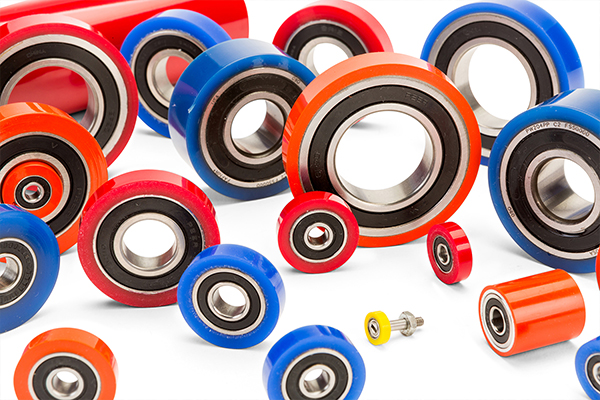Newsroom
Coated Bearings: Enhancing Performance and Longevity in Demanding Applications
2019-02-16In modern machinery, bearings play a critical role in ensuring smooth operation, reducing friction, and supporting loads. However, in harsh environments—such as those with high humidity, corrosive chemicals, or extreme temperatures—standard bearings may degrade quickly. Coated bearings provide an advanced solution by incorporating specialized surface treatments that enhance durability, reduce wear, and improve performance.
This article explores the types, benefits, and applications of coated bearings, helping engineers and maintenance professionals select the best option for their needs.

Types of Coated Bearings
1. Corrosion-Resistant Coatings
- Stainless Steel Bearings – Made from high-grade stainless steel (e.g., 440C, 316) for superior corrosion resistance.
- Zinc-Nickel (Zn-Ni) Coatings – Electroplated layers that protect against rust in marine and chemical environments.
2. Low-Friction & Wear-Resistant Coatings
- PTFE (Teflon) Coatings – Reduce friction and provide self-lubrication, ideal for food processing and medical equipment.
- Diamond-Like Carbon (DLC) Coatings – Extremely hard, low-friction coatings used in high-speed and precision applications.
- Molybdenum Disulfide (MoS₂) Coatings – Solid lubricant coatings for high-load, low-speed applications.
3. High-Temperature Coatings
- Black Oxide Coatings – Improve heat resistance and reduce galling in high-temperature environments.
- Ceramic Coatings – Used in extreme heat applications (e.g., aerospace, industrial ovens).
Key Benefits of Coated Bearings
✅ Extended Service Life – Coatings reduce wear, preventing premature failure.
✅ Lower Maintenance Needs – Self-lubricating coatings minimize the need for frequent re-greasing.
✅ Improved Efficiency – Low-friction coatings reduce energy consumption.
✅ Corrosion Resistance – Ideal for wet, acidic, or marine environments.
✅ Customizable Performance – Coatings can be tailored for specific industry needs.
Applications of Coated Bearings
1. Automotive & Aerospace
Engine components, landing gear, and turbochargers benefit from heat-resistant and low-friction coatings.
2. Food & Beverage Industry
PTFE-coated bearings ensure compliance with hygiene standards while resisting washdown chemicals.
3. Marine & Offshore Equipment
Zinc-nickel coatings prevent saltwater corrosion in ship propellers and pumps.
4. Medical & Pharmaceutical Machinery
Non-toxic, corrosion-resistant coatings are essential for MRI machines and surgical tools.
5. Industrial Machinery
Heavy-load bearings with MoS₂ or DLC coatings improve performance in mining and steel production.
How to Choose the Right Coated Bearing
🔹 Environment – Will the bearing face moisture, chemicals, or extreme temperatures?
🔹 Load & Speed – High-speed applications may need DLC coatings, while heavy loads may require MoS₂.
🔹 Lubrication Needs – Self-lubricating coatings (PTFE, MoS₂) reduce maintenance.
Coated Bearing Maintenance
✔ Regular Inspections – Check for coating wear, corrosion, or unusual noise.
✔ Proper Lubrication (if needed) – Some coated bearings still require occasional lubrication.
✔ Avoid Overloading – Even coated bearings have limits—ensure proper load ratings.


